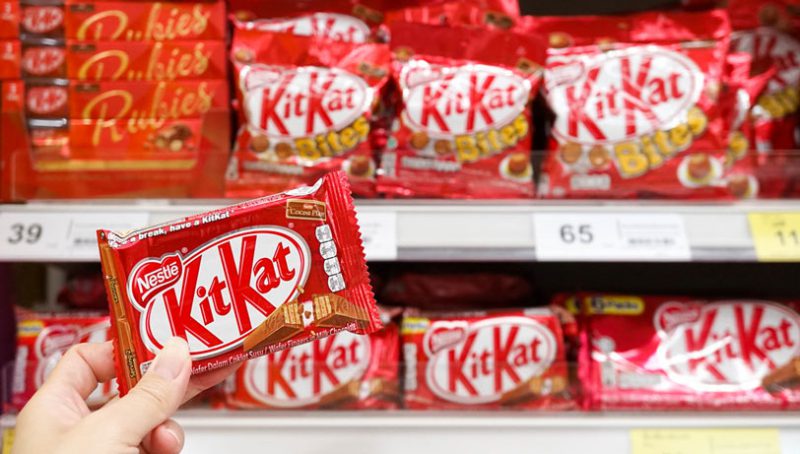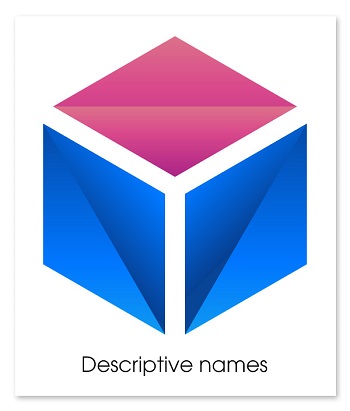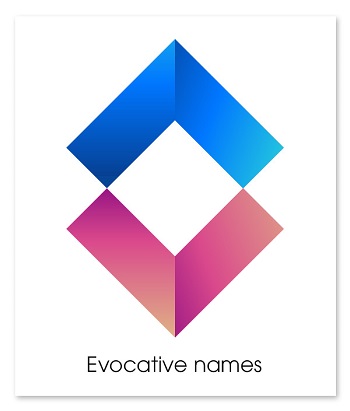
An effective brand and company name is based on their ability to connect and convey a certain message to customers.
Marty Neuemier said in the famous brand book The Brand Gap : “Giving a good brand name always starts with the customer, and they always want to identify, remember, discuss and compare the brand in a way. The most convenient. The right name is a very valuable brand asset , helping to differentiate and quickly get that brand accepted in the minds of customers.”
But of course, choosing a brand name is not an easy task. How effective is the name? Does this name sound “cry”? What are the legal issues of trademark protection for this name?
What makes a good brand name?
There are a number of theories as well as research on the factors that influence brand names. For example, according to a 2010 study by the University of Alberta, customers have more positive interactions with brands that have a repetitive name structure, that is:
- Coca Cola
- Kit Kat
- Jelly Belly.

While there isn’t a perfect formula for naming a brand, there are a number of characteristics that you need to keep in mind in order to have an easy-to-use, memorable name. That is:
- Meaningful: Brand names need to convey some value, evoke images, and foster positive emotional associations with the business.
- Standout: It needs to be different from the competition, and easily memorable.
- Applicability: Everyone can easily read, pronounce, and write it.
- Ability to protect: You need to own the domain, perform intellectual property procedures for the brand name.
- Permanence: Over the years, as the company grows, the name can still stay relevant, and adapt to a variety of new product lines.
- Images: You can convey them in design languages: icons, logos , colors, etc.
The 7 Most Common Types of Brand Names
The task of naming a company, or naming a brand, is not an easy one. The naming process usually goes through the following steps:
- Research process
- Brain-storm ideas
- Tweak the idea
- Experiment
To make it easier to name a brand, you need to understand the most common, basic types of names. Understanding these types of brand names will help you more clearly define what your business wants.
Here are seven common names:

1. Descriptive – Description
A descriptive brand name is a name that has shown the industry, field, product or service of the business. The advantage of this type of brand name is its practicality and clear function description. However, this inadvertently makes the creation too little land.

Eg:
- Toys R Us
- E*Trade
- General Motors
- YouSendIt.
The brand names described above are all very coherent in conveying the brand story . However, it will make the problem of future expansion and diversity development more difficult.
Another disadvantage of this type of name is that it is quite difficult to protect because they are mainly based on common words or phrases.
2. Evocative – Evoke
Evocative names – Names that are suggestive or suggestive of a brand’s experience or positioning.
Those are innovative names that are powerful tools for making a difference. Because Evocative names tend to be more multidimensional, it’s easier to express what the brand means, rather than just representing a specific product or service.

Brand names of this type are often the foundation of brand positioning. Some notable examples include:
- Nike
- Patagonia
- Amazon
- Virgin
Because of their originality, evocative brand names are often more protected than descriptive names. However, they require extremely high alignment with the structure and model of the business, otherwise it will be like a bullet in the foot.
3. Invented – Invention
The best thing is that in case you can’t find a word for your brand name, you can completely create them yourself.
Invented brand names must be extremely special. Some are built from languages like Latin, Greek or others, and then tailored to best represent the brand’s personality.

Eg:
- Exxon
- Kodak
- Xerox
- Verizon
The challenge with invented brand names is that they don’t have clear definitions, and it’s the business’s job to build a story around the name. While they can be very easy to protect, these names require huge marketing costs as well as years of time to educate customers.
4. Lexical – Vocabulary
Lexical brand names – are brand names that rely on puns for good memorability. Some of the basic types in this brand name can be mentioned as: puns, phrases, compound words, alliterations, onomatopoeic words, misspellings, and foreign words.

The brand name Lexical is a pretty smart choice, some typical examples can be mentioned as:
- Dunkin’ Donuts
- Krazy Glue
- Fly
- Sizzler Steakhouse
But, naming after a pun also has certain disadvantages. Customers in this day and age have been bombarded with marketing techniques that include the use of puns. Therefore, it needs to be extremely subtle and creative.
5. Acronym – Abbreviation
This is the most basic, “ancient” naming method from the earliest days of branding. Some famous brands, using abbreviations can be mentioned as:
- IBM
- AARP
- BP
- UPS

KFC is a good example when it is wise to choose a brand name as an acronym. Because, the word “Fried Chicken” brings a negative feeling to the health of customers, which is a taboo when doing business in restaurants.
The biggest minus point, abbreviated brand names will be extremely difficult to make customers remember and even more difficult in the story of brand protection.
6. Geographical – From geography
Brands are sometimes associated with a specific region or region, for example:
- New York Life
- Nantucket Nectars
- Arizona Tile

Geographical brand names are names imbued with cultural and historical elements with a particular location. You will often come across companies using this type of name when their target audience and market are concentrated in a certain region.
And the biggest weakness that can be mentioned is the difficulty of change in case the business expands and needs rebranding . Since it is enough to attach the name of a city to a product or service, most of these names are already used and protected.
7. Founder – founder
Brand names named after the founder often evoke an element of respect for the legacy left behind. Some prominent brands can be mentioned such as:

- Fords
- Ben & Jerry’s
- Martha Stewart
- Ralph Lauren
- Mrs. Fields
Brand names based on founders can easily be protected, but nevertheless, they are too closely tied to an individual’s story. Therefore, it is very easy to break if the founder’s personal brand is in trouble. At the same time, branding will need to be done in parallel, both for individuals and businesses.
In addition, do not forget to consider factors related to intellectual property rights and image copyright when naming your brand.
The 10-step process of naming a company brand
Here’s a basic 10-step process to help you come up with a good name, stick with your target audience, differentiate yourself from your competitors’ brands in the market, and, above all, survive. time.
1. Building a brand strategy
You should not proceed to the naming step if you have not clearly planned the branding strategies for your business.
How can you know that this name is appropriate if you do not know the overall picture of the direction, differentiating features, and promise and commitment of the brand?
>>> Build a brand strategy from zero
2. Market, competitor and customer research
You need to really understand your market before branding your company. Do you already know how customers perceive your competitor’s brand name?

Analyze the pros and cons, look for customer insights, the chances of owning a good brand name will be much higher.
3. Identify the messages the brand will convey
After understanding the current state of the market and competitors, as well as what customers want from the brand, establish brand positioning.
Businesses need to use this positioning in conjunction with the brand promise to name the brand correctly. In addition, the name of the business also needs to match the inherent brand personality .
>>> Brand Positioning – Brand Positioning
4. Brainstorm naming ideas
Sit down and brainstorm ideas for your brand name. In this stage, quantity is more important than quality, so let your creativity speak for itself.

Crazy thoughts can create perfect ideas. Look at your brand from many angles, focus on benefits factors, consider target customers, and create a list of names as long as possible.
5. Collapse the list
Then choose between 10 and 20 of the best names. You need to make sure that these brand names can respond and survive when: the market changes, the business expands, enters other markets, new trends, etc.
You should have a brand name that can go along with the years because you never know in advance how the world, market, customers, competitors will change.
6. Check intellectual property and domain name
Check your brand name in the other list, which name meets the 2 factors of intellectual property and domain name. You don’t want to burn money running marketing for a brand that’s already owned by someone else.

You can consult more advice from lawyers in the field of trademark protection.
7. Choose the most suitable name
Based on protection factor and domain name, narrow down your list again, down to about 1-3 names.
8. Check the pronunciation, reading and writing of the brand name
You will need the process of evaluating, testing your brand name by how others pronounce, write and remember your brand name. The larger the test sample, the better your chances of making the right decision.
The area factor, the age of the customer also needs to be considered, because, each geographical area, each age will have a different look and pronunciation. So make sure the brand name meets the consistency.
9. Check the visual element of the brand name
The next step to take, is to check the effectiveness of the visual element for the brand name.
Try putting them on Logo templates, applications on existing name card templates, letterheads. Try putting on a profile picture on Facebook, try putting it on a website… try everything in your power
10. Launching and managing brand names
This is the final step in the branding process, you need to ensure that it is applied consistently across every touchpoint. Continuously monitor, and gather direct feedback from customers.
>>> Brand Management – 11 Principles of Brand Management
The naming is extremely important, but you need to remember one thing: A good brand name, a good company name cannot make a good product. But a good product can make the weirdest name unforgettable.

![[Social Branding] Branding on Facebook 5 xay dung thuong hieu tren facebook](https://maludesign.vn/wp-content/uploads/2021/03/xay-dung-thuong-hieu-tren-facebook-500x500.jpg)


